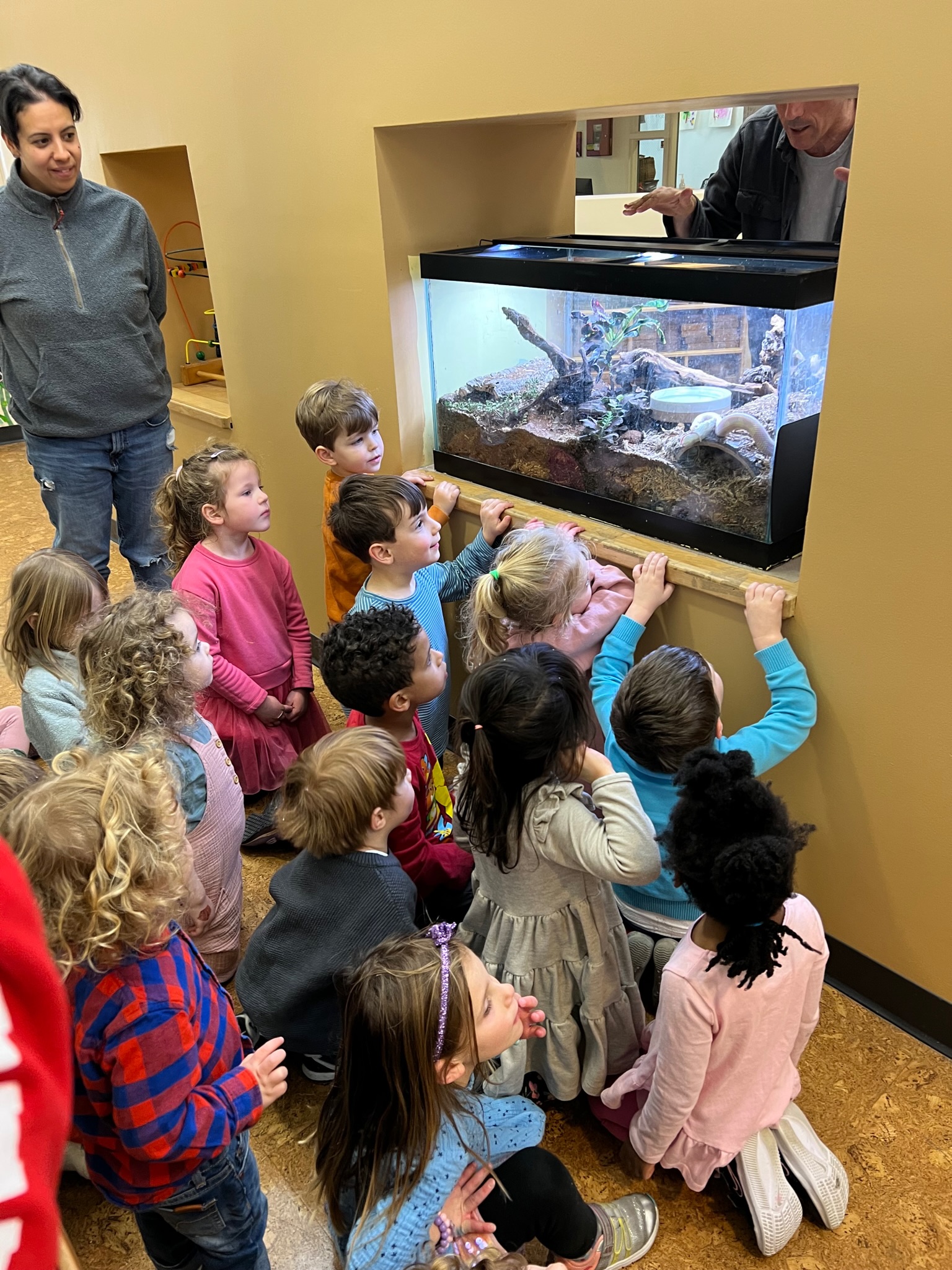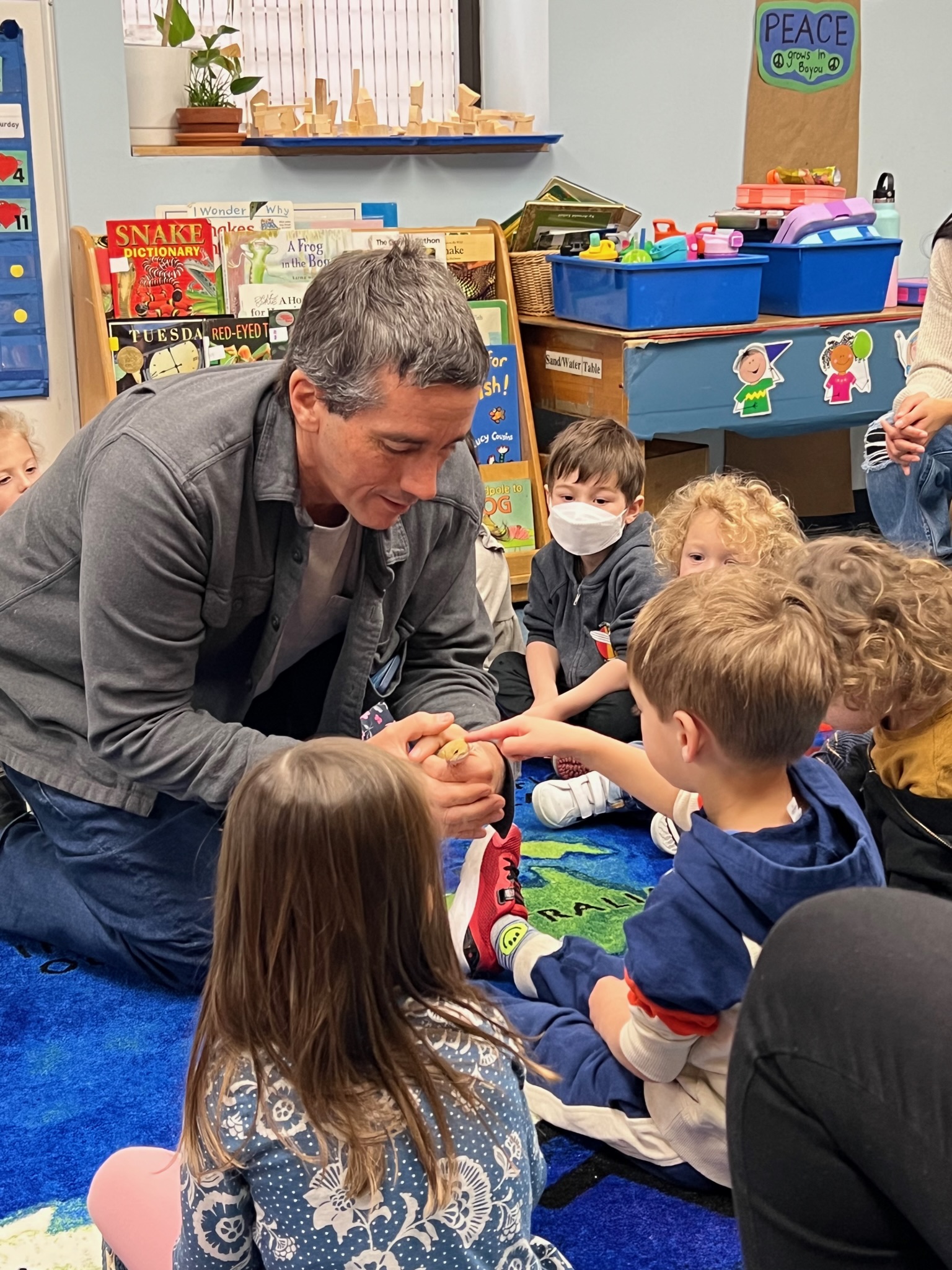 In February, we devoted the winter holiday break to learning about the animals that live at Open House. For the students who joined us for our February Break Program, the week was filled with engaging activities: from learning fun facts about Delta, our leopard gecko, to painting watercolor fish to mimic our angelfish and rolling out snakes from model magic like Scarlett, our albino king snake.
In February, we devoted the winter holiday break to learning about the animals that live at Open House. For the students who joined us for our February Break Program, the week was filled with engaging activities: from learning fun facts about Delta, our leopard gecko, to painting watercolor fish to mimic our angelfish and rolling out snakes from model magic like Scarlett, our albino king snake.
Things got really interesting, however, when we asked them to observe and engage with the animals more directly and we saw them start to co-regulate with them.
We talk often about co-regulation in the classroom, but what are we naming?
Co-regulation is the process by which individuals make adjustments to their interactions in coordination with another to achieve a positive emotional state. When babies watch and mirror their caregiver’s facial expressions, we can see the beginnings of co-regulation. When we notice a teacher’s calm, patient, and observant practices we are seeing how they use co-regulation to support children’s emotional development. The connections and interactions that children have with the caregivers in their lives are essential throughout their childhood to developing emotional regulation skills. Having animals provides another opportunity for children to regulate alongside another creature, in a very physical and direct way.
During the week, one group was tasked with making observational notes of the fish in the front tank. As they quietly watched, with colored pencils in hand, they noted not only how colorful the fish were, but also the way the fish moved, the quiet burble of the water filter and the gentle leafy green movements of the tank’s environment, showing how closely they were observing. As they sat with eyes wide and bodies calm, they saw Scarlett unhinge her jaws and slowly, so very slowly, swallow her lunch whole. And before Tom brought the leopard gecko out of her enclosure, he asked the rug full of children to help Delta feel comfortable in the space. The children brought their full attention to the meeting, kept their hands and bodies calm, and focused. They were able to adjust themselves to the needs of the small creature so that they could pet the quiet reptile and watch it stalk and eat crickets. 
Children’s interactions with animals have a unique quality. Unlike toys, of course, animals are unpredictable and emotionally and physically responsive. Unlike most adults, they do not share a verbal language to negotiate, scold or teach. Animals can be fascinating to watch and a powerfully magnetic presence for a young child. Children often long to have a connection with animals. Having positive interactions with an animal requires children to use a variety of skills – having impulse control, being observant and physically responsive, managing their strong emotions – to create a feeling of safety. In seeking these interactions, children can practice co-regulating with the animals, much as parents and teachers co-regulate with them.
The strong bonds children develop with parents, caregivers, teachers, and friends are essential to their emotional, social, and cognitive development. The bonds children develop with pets and other animals have their own distinct qualities, which add a valuable dimension to children’s emotional learning, filled as they are with unpredictability as well as with empathy and connection. We value the unique connection all our curious critters offer our students at Open House and hope you enjoy them as well.
Krista Bogetich 3/31/23
Education Director
